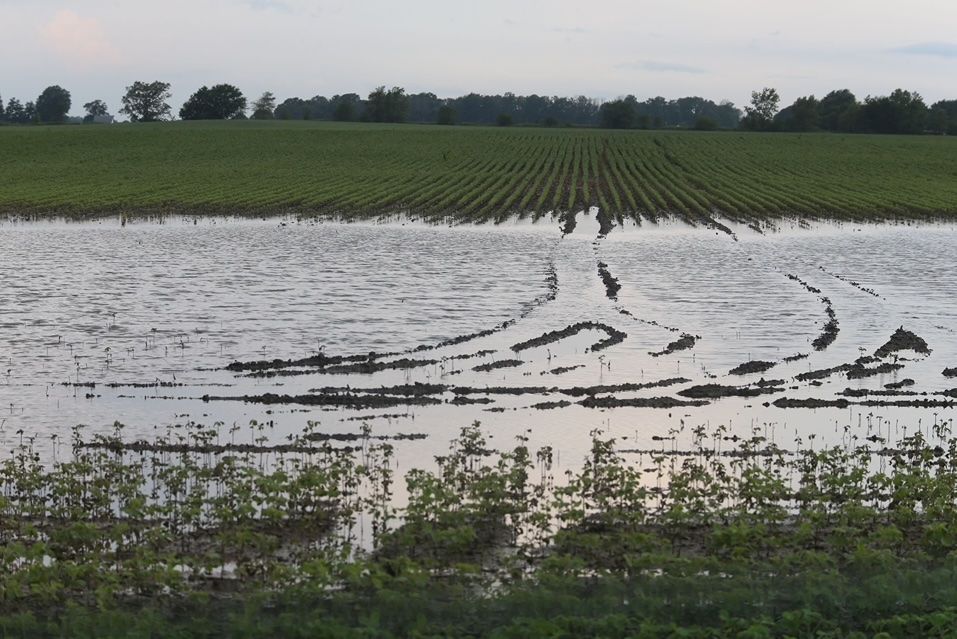Practical Applications

Spray technology aids efficiency and stewardship
When farmers apply pesticides, they’re managing so much more than weed and insect pressure. They’re also managing their profit potential, their sustainability efforts and, to some extent, the crop-health of their neighbors.
“In this day and age, as important as profit is not getting into trouble with our neighbors,” says Iowa farmer David Ausberger. “As farmers, we always have eyes on us.”
Together, all these factors give farmers a wide range of variables to consider to ensure their pesticide and herbicide applications are accurate and strike an economic and sustainable balance.
Innovations in sprayer technology can help farmers keep all those proverbial plates spinning.
Using resources
Technological advances have impacted farmers’ ability to be more precise in their spray applications. As is the case with many farm technologies, experts say spray innovations have come about as a result of a steady evolution that today offer farmers greater control. Boom control and auto-steer are widely used technologies, but others haven’t gathered as much traction with farmers.
“In my experience, we’ve had a lot of great technology developments in the past decade, but I would also say for the most part we’ve had pretty slow adoption of these new technologies,” says Joe Luck, Precision Agriculture Engineer at the University of Nebraska.
Ausberger is a fifth-generation farmer who raises soybeans and corn near Jefferson, Iowa. He takes an innovative approach to nearly everything on his farm, from the no-till practices he uses on his land to his commercial-sized wind turbine and solar-powered shop.
He says he usually has a survey or research study happening on nearly every piece of land he farms. Last year, Ausberger purchased an old sprayer that he is equipping with Y-drop nozzles to more effectively side dress nitrogen on his corn.
Because he is a one-person operation, Ausberger says he hires-out pre-emergence weed spraying so he can focus on planting. However, the post-emergence applications and side dressing are his domain. He’s used technologies such as GPS guidance and boom control for many years because it helps him balance productivity and stewardship.
“With commodity prices being what they are, we have to watch every nickel of input. Technology helps us to put out less product. We can time the applications better to put nutrients out when plants need them,” Ausberger says.
Ausberger says he makes spraying decisions with the help of data gathered from monitoring systems. He also incorporates rigorous soil testing so he can make better decisions for the environment.
Whether applying pre-emergence herbicides in April or spraying for soybean aphids in August, proper placement is vital for effective control without causing any unwanted consequences. Because of wide-ranging crop-protection products and an equally wide range of conditions, precision-farming resources are vital when giving farmers the tools to make effective applications and good decisions.
Controlled delivery
“Some of the key changes in sprayer technology have come in our ability to control spray down to the individual nozzle,” says Jason Dannelly, AgSpray Equipment site manager in Fargo, North Dakota. “We could do sections before; now it’s even more of an exact science.”
Precise pesticide application is important to achieve good weed or pest control, reduce input costs and demonstrate good environmental stewardship.
Luck says innovations such as pulse-width modulation, direct-injection systems and laser-guided automatic boom-height control are the next generation of technologies being found in spray equipment. Those tools are designed to limit drift while providing uniform applications, regardless of speed, turns or field shape.
Proper application also includes the use of the correct spray nozzles for the products being applied. Some restricted-use product labels now specify which nozzles should be used. Several mobile device apps are available to help farmers know which nozzles to use and to make decisions on numerous variables that can impact spray effectiveness.
“I have a strong belief in technology,” Ausberger adds. “Technology development is kind of an arms race. Sometimes the software jumps ahead of the hardware and sometimes it’s the other way around, but it all works out in the farmer’s favor to be able to apply products efficiently and in a timely manner.”



